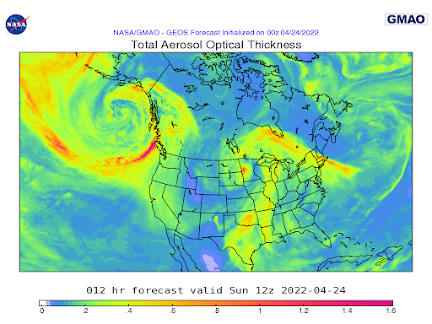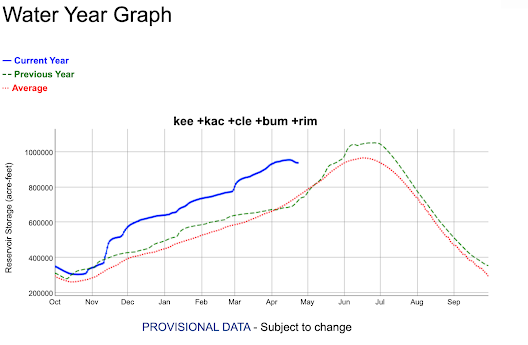There are few greater disappointments for our region than the precipitous decline of KNKX, a public radio station whose listenership and web traffic have declined rapidly as its news coverage has taken on a shrill partisan tone.
But it is worse than that.
The change in KNKX has denied the region the balanced news coverage required for a free society to make wise decisions, and the station's implicit advocacy of an uber-progressive agenda, including defunding police, has contributed to the profound increase in crime and urban deterioration apparent throughout the region.
Declining Public Interest and Listenership
Google Trends provides a tool for viewing the number of searches over time, and the numbers for KNKX are shown below.
You will notice a major drop in mid-2020 as the editorial policy of the station shifted to pushing identity politics and they ejected their meteorologist for speaking up against the violence in Seattle. And the online interest in KNKX continues to decline.

But what about listenership statistics, such as those provided by Neilsen Company? As shown below, the proportion of the Seattle listening audience tuning in to KNKX (the market share) dropped 40% during the past 6 months from 3.6 to 2.8.
What about the total number of station listeners, a measure known as CUME?
A decline from roughly 320,000 to 220,000—a third of their audience is gone. Last fall KNKX had a funding drive and failed to reach its target—something that never happened before. No wonder KNKX stopped showing their goals during fund drives.
A Biased, Partisan Public Radio Station
The management of a public radio station has a responsibility to provide unbiased information to the public, untinged by political advocacy. A public radio station should not have a social change agenda. Communicating truth and facts, and providing a venue for discussion and debate should be central.
KNKX management has failed in this crucial arena. This is easy to prove.
Go to the KNKX public website or load their app, and you inevitably see a front-page with highly racialized, politicized material. I mean day after day. Serious news or analysis is rare. Below are a few examples.
Among the “enhancements” at the station has been the hiring of a social justice reporter, Lilly Ana Fowler, who produces socially “appropriate” material. This reporter has an active Twitter account where she provides activist materials, such as the statement that the border patrol was whipping Haitians trying to enter our southern border (see below). This "information" was not true, by the way.
Ms. Fowler has a very strong anti-police stance.
Social justice reporters inevitably act as social justice advocates. I have not seen an exception to this rule.
So we have a radio station that is apparently ok with a news staff member spreading highly political, and sometimes untrue, material on Twitter, but fired their meteorologist for complaining about political violence and defunding the police in Seattle. Political violence favored by the activist left.
Spot any hypocrisy here?
One knew there was a serious problem when the KNKX program director, Matt Martinez, talked about his racial ideas in an interview on Current.Org, where he discussed “uncomfortable truths about race in public radio.” In that interview, he complained about KNKX’s “very white audience”, “white-led organization”, “mostly white newsroom”, and “all white announcers.” Replace white with another race and you see how inappropriate his comments were.
Mr. Martinez hired an activist news director, Flogangela Davila, who has overseen a sea change in KNKX's on-air and online offerings towards a progressive left viewpoint. Ms. Davila has steered KNKX news coverage, both on-air and online, into the politicized outlet it has become.
Mr. Martinez resigned about a year ago, but the current station management reiterated their support of his policies in a public statement in June last year.
The political shift of the station was evident when I was there. I was told to keep away from talking about climate change because activist organizations (like 350.org) did not like the peer-reviewed science I would communicate. In fact, these organizations were so upset that I was providing rigorous science in this blog that they demanded that the station investigate my science. To the eternal disgrace of the station, KNKX management caved in to the demands and made a member of 350.org the leader of the study. Unbelievable.
Of course, I was "cleared"...my science was solid. But the fact that KNKX management was so weak that they felt the need to give into activist groups, says everything.
There is little doubt why the listenership and readership of KNKX are declining rapidly. The political bias of the station is obvious, and factual content has declined precipitously, both on-air and online. KNKX management has a responsibility to provide unbiased, comprehensive information to the public, and they have failed to do so. And worse than that, their reporting has implicitly supported policies that have led to a rapid decline of the Puget Sound urban environment.
PS: In my blog of June 2020--the one that got me fired by KNKX--I warned about the impacts of political violence and the terrible error in defunding the police. Unfortunately, my predictions of increased crime and the decline of Seattle all came true. And my warning that the most vulnerable would be hurt the most also came true.
The folks that KNKX activists supposedly cared the most about were hurt the most. Perhaps KNKX management should think about that for a minute--and their own responsibility for what has occurred.
Update: Charity Navigator, a respected charity evaluator, gave KNKX (Pacific Public Media, its parent organization) a FAILING score.
One issue is that only 58% of contributions were used in programming. 21% went to administration and 21% for fundraising.
KNKX is known for lavish, expensive holiday parties.


























.png)
.png)



























